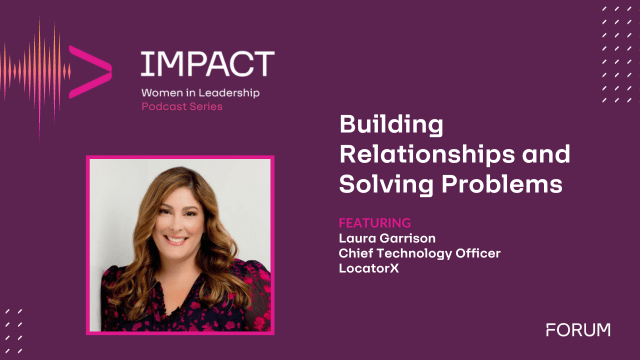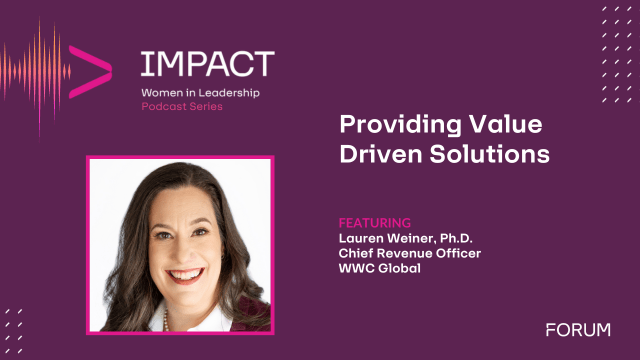G2X Media’s President, Susan Sharer, had the opportunity to speak with Anirudh Kulkarni, Founder and CEO of CVP, to gain his insights on moving from a small to mid-tier business, what Government needs to focus on when buying, the importance of people, and what comes next.
Why CVP does Onboarding and Culture & Value Training?
The skeletal framework of infrastructure doesn’t define a company, its people do. That’s why it is so important to provide a thorough new hire orientation and corporate review. But we also provide culture and value training, which I personally present. The people we bring in need to know that they are not coming to work for just a Government consultant, but a firm focused on innovation with a strong culture and deep commitment to our employees. We are very mission-focused, and we need people who are committed, who are able to translate their skills and expertise from one contract to the next.
Never Overlook the Young
Each year, we hire 10 percent of our workforce from college. That isn’t to say we hire and then just let them go. There needs to be the right development model for these brilliant young people, and they need to be matched with senior people to guide them. Part of this is about guaranteeing we provide a single experience to clients across all of our work to ensure we establish ourselves as a solid, reliable, mid-tier firm.
Early on, when we started this, it took a little work to convert clients to look at these young people with different eyes, but now, they seek the opportunity for this kind of engagement. We have young people coming out of college, spending time during the summer being part of existing projects. Clients see the output and outcomes these young minds can drive, and that is all the evidence they need.
Going from Small to Mid-tier
There is a tactical aspect as you grow that says everyone is in the business of business development. What that means is that every member of the team is an active problem solver, able to identify what is right for a particular client at a particular point in time. That tactical aspect also means that as you grow, you need to ensure everyone on the team is able to talk to clients the way a larger, mature firm does. It all matters in terms of behavior at the ground level.
Everyone needs to be committed to being in that mid-tier range, that means expressing our value, not as an 8(a) on a grandfathered contract, but in terms of who we are now. That means approaching new business from the view of securing it on unrestricted contract vehicles and having multiple options available.
There also needs to be alignment in terms of which deals we go after and understanding how clients, new and old, will reach us in different ways.
The Strategic Vector
We have always made big investments in architecture, in policy and procedure, in human resources, and so on. Part of that was because that was the only way I knew how to do things. You have to be practical about it though, that means being on and being set up to be on the right deals. It also means having a broad leadership team and depth with the ability to move people and have people step in as needed.
We have an aggressive growth path in front of us based on organic revenue and some planned acquisition. We’ll leverage our own balance sheet for these, so we want to be very diligent about how and why. Part of this will ultimately focus on a three-vector criteria of customer set, capability, and contract vehicles.
Where the Market is Going
Government has been making momentum towards transformation, things like cloud, modernization, cyber, and data analytics that started about three years ago. We know Government moves cautiously, so those transformation efforts will continue for the foreseeable future. There is also a lot going on within DoD that will continue to move ahead with NextGen.
In our space, these transformative technology solutions are a big part of any company, and we will keep our focus there. Still, if these capabilities don’t connect to real subject matter in policy, strategy, and evidence backed by research, a company is just a commodity. To distinguish themselves, companies will need to have people that understand what clients should be doing around process and regulatory issues.
Advice to Government
Government needs to be more particular as they are evaluating bidders to understand what they are buying. Are they buying tech and if so, how do they decide which? Many firms do the same thing. There is a need to think differently about how companies are being evaluated.
Government should reconsider how they purchase. They ought to allow small business set-aside vehicles to include mid-tier and larger companies. In many cases, small businesses are not robust enough to take on larger assignments. Mid-tiers, however, are still nimble and innovative from their recent small status, but they have scaled up with a deep bench of expertise and the maturity to deliver on the mission assuredly. By expanding the vendor pool on contracts, Government will be able to service their small business goals through specific SB task orders on the vehicles, but they can also leverage the talents of mid-tiers. This approach will ensure the development for both small and mid-tier companies while making for a more competitive landscape guaranteeing Government procures the best solutions possible.
Next Steps
We’re in unprecedented times. Companies need to be thinking now about their role post-COVID-19. For ourselves, we’re thinking more about social determinants of health and how those could have helped target those at risk during the current crisis, about better-targeted outreach. Forward-thinking technology firms like ours will play a crucial role in helping Government adapt to, trace, react to, and prevent pandemics like COVID-19.
Government hasn’t stopped working, and so it and industry need to shift. Industry needs to show they can be thought leaders and problem solvers, to take what they do and target specific issues now and specific issues yet to come. It may not be different than what we are doing now, but we will need to do it better.
About Anirudh Kulkarni
 Anirudh Kulkarni, Founder and CEO: Kulkarni founded CVP in 2003 to serve our nation’s critical interests in health, citizen safety, and national security through innovative technology-enabled solutions. CVP holds nine Inc. 5000 awards and maintains 100% customer retention. Kulkarni serves on the Dean’s National Advisory Council at GW School of Engineering, is an inductee into its Engineering Hall of Fame, an AFCEA Industry Leader of the Year, an Association for Corporate Growth National Capital Chapter former board member, and a venture partner at NextGen Venture Partners. He received a BS in operations research and computational science, with concentrations in statistics and economics, and an MS in operations research and management science from George Washington University.
Anirudh Kulkarni, Founder and CEO: Kulkarni founded CVP in 2003 to serve our nation’s critical interests in health, citizen safety, and national security through innovative technology-enabled solutions. CVP holds nine Inc. 5000 awards and maintains 100% customer retention. Kulkarni serves on the Dean’s National Advisory Council at GW School of Engineering, is an inductee into its Engineering Hall of Fame, an AFCEA Industry Leader of the Year, an Association for Corporate Growth National Capital Chapter former board member, and a venture partner at NextGen Venture Partners. He received a BS in operations research and computational science, with concentrations in statistics and economics, and an MS in operations research and management science from George Washington University.
About CVP
CVP is a business and technology consulting firm serving Government customers tackling the most challenging issues of our time while keeping up with an unprecedented pace of change. From identifying and mitigating cyber and physical threats, to analyzing the quality of Healthcare outcomes, to unmasking Healthcare fraud, waste, and abuse, we immerse ourselves in our customer’s mission. CVP understands our customers’ business problems and provides insights, strategies, and solutions – driving better outcomes by Navigating Change.












